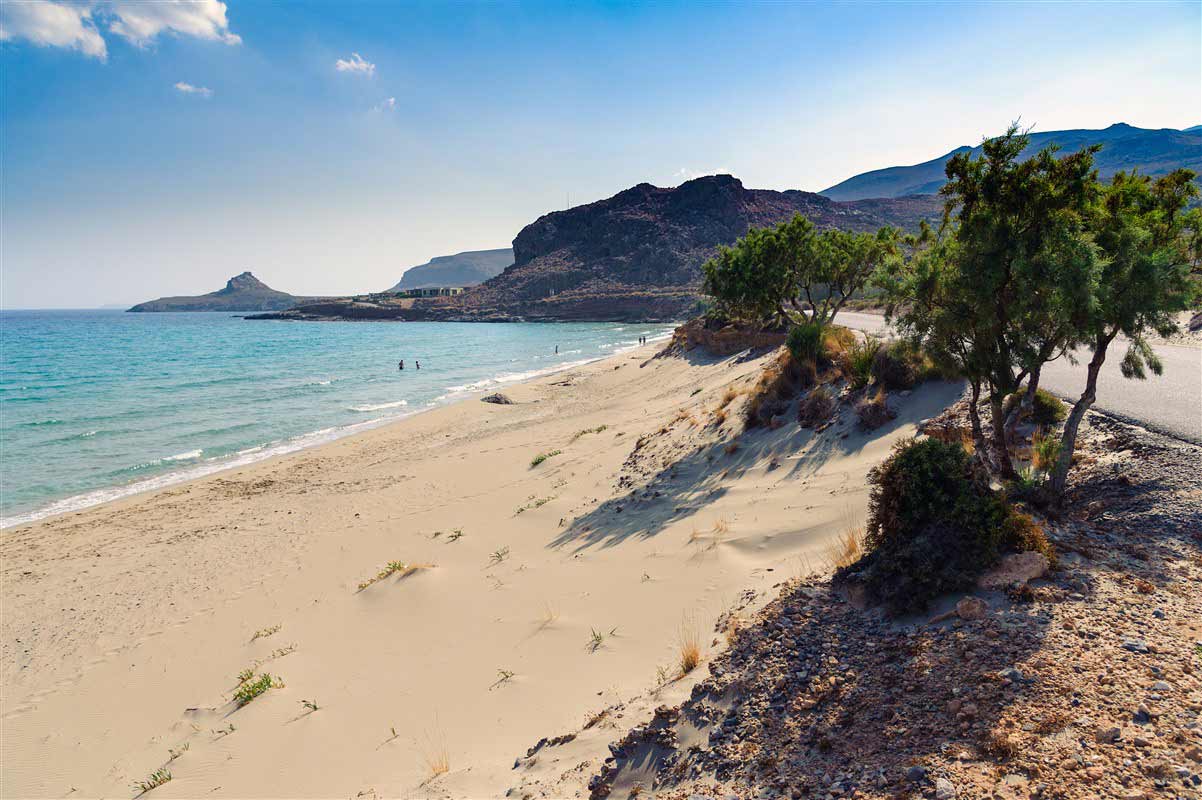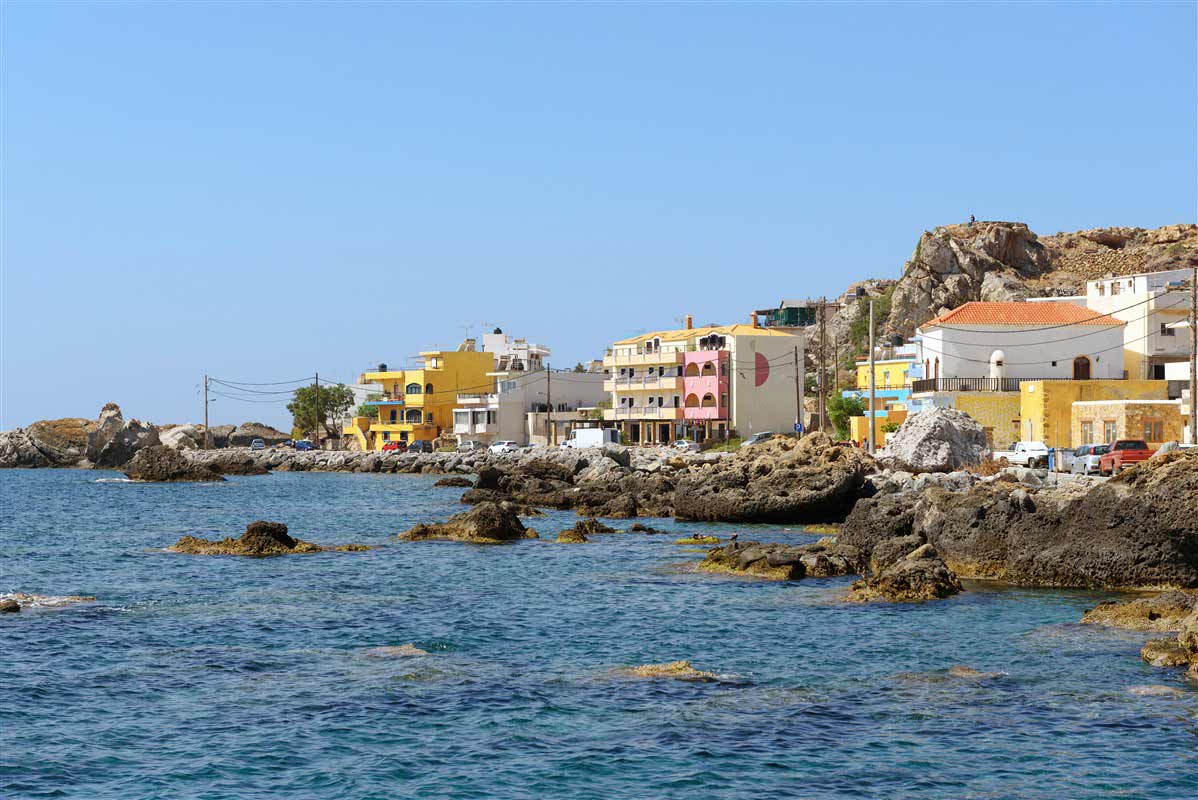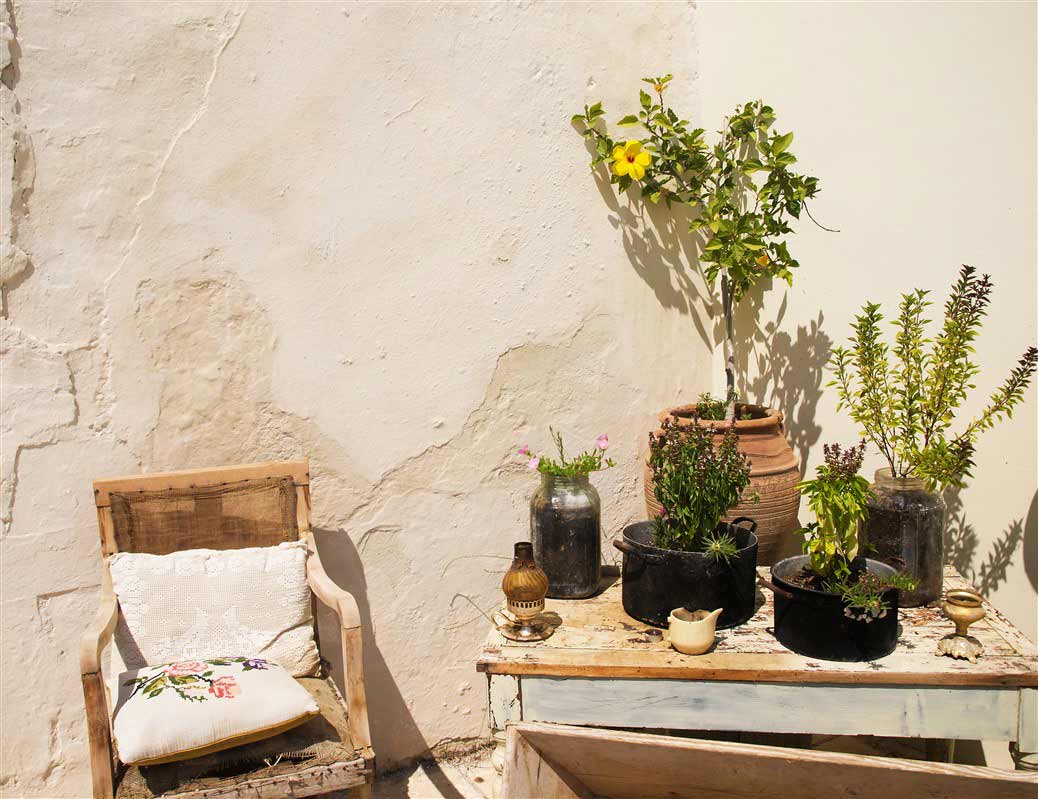"There is a kind of flame in Crete – let's call it 'soul'". To really connect with this poetic description by the great Greek author and philosopher Nikos Kazantzakis, you have to go walking in Crete, particularly in the west and south of the island.
Arriving in Chania is an experience in itself, with its elegant Venetian harbour today dedicated to pleasure-boating. Enjoy a first glass of Cretan white wine as the sun sets, sheltered from swells and the Etesian winds. Stroll through the old town and get lost in the maze of spice, honey and herb shops. The shelves are stacked with a mix of jars and bags full of infusions of native plants, like magical mountain tea or medicinal leaves with powerful aromas. Crete certainly lives up to its expectations.

The next day is all about soaking up the surroundings, taking a first swim and wondering at the beauty of Kissamos Bay. Both peninsulas on either side of the bay are incredible spots for hiking and snorkelling. Continuing westward, opposite the island of Imeri, is another of the most beautiful Cretan sites: the Bay of Balos. It's here that the island of Tigani is connected to the coast by a narrow strip of sand. At the end of the path, there is a beautiful turquoise lagoon. Head south through old shepherd and farming villages such as Platanos, Sfinari, Plagiade and Kefali. To the east, the coast road smells of fragrant thyme. There are a few guest houses nestled in the landscape. Cool off to the sound of crickets, before enjoying a chicken stew with preserved olives. Then back to the sea, to reach the Chrissoskalitissa monastery, and further on, the ultimate reward, the turquoise waters of Elafonisi island.

From Elafonisi, along a winding road, you finally reach Palaiochora, a jasmine-scented and charming seaside town. Palaiochora is the gateway to the south coast. From there it's possible to navigate along the coast from port to port as far as Sfakia, but part of the famous E4, Europe's longest major hiking trail, is located here, on its way around the continent. The beauty of this Cretan portion of the E4 is almost indescribable. However it is not always well marked, meaning it's important to concentrate on the sometimes dizzying pathways, and have a good supply of water. The majestic gorges, mule-trodden trails, mountain villages buried under oleander bushes and heavenly beaches are all yours, as you make our way to Sougia, Omalos, Agio Roumeli and Samaria Gorge, on a pilgrimage to paradise.

There's nothing like leaving behind the hustle and bustle of the world and losing yourself in a shady gorge as you go walking in Crete. For a while you might feel a bit like a goat, the freedom and harshness of this animal's life suddenly a stark reality, while stumbling across some Minoan remains only accessible on foot. This is part of what makes Crete's over 6 00 miles of coastline so interesting, these hidden places only accessible on foot. The climb to the Omalos plateau, with an altitude of about 4 ,600ft, is well worth it. Forests are rare on the island, but the pine forests and pastures in this area are remarkable. The plateau is fertile, with orange groves spread over this abundantly sunny region. Head south on the summit paths to admire the White Mountains (Lefká Óri) as they plunge into the sea, as well as the well-known Samaria Gorge, spanning 11 miles. It takes strong calves to descend the 4, 000ft and reach the big blue sea at Agia Roumeli. From the centre of the island to the coast, the high mountains give rise to a multitude of landscapes. Though the sea is all around, walking these trails quickly reveals that Cretan people have often looked inwards, and not out across the water. After all that hard work, enjoy some time on the beach or the terrace of a local taverna before boarding the ferry to Loutro.

The only natural harbour on the south coast, Loutro is also part of the E4 trail. This charming village lies in a well-preserved natural setting, with white buildings in rectangular shapes. In the beachfront tavernas, there are an array of Cretan specialities, including fish, roast lamb skewered on olive branches and goat stews. And if you spot touristy souvlaki on a spinning rotisserie, resists the urge. Dare to be adventurous. Loutro is only the starting point from which to explore the surrounding coastal hamlets, which is a joy. The guest houses there are run by proud shepherding families who come down from the mountains during the summer season. Pushing westward, thirty minutes' walk away, Lycos Beach stretches ahead, the most authentic and wildest of the area's beaches. Set in the shade of native palms, this small bay is lulled by an African wind and the sound of goat herd bells. There's an authentic sheepfold a stone's throw from the sand. A collection of aromatic and medicinal plants is cultivated with care on the shaded terrace. At dawn, a herd of over 500 goats and sheep descend from the surrounding mountains for breakfast. The Small Paradise Hotel is aptly named. The nearby Nikos Restaurant is owned by the same siblings. They have one rule: produce must be fresh and everything homemade. Sun-drenched fruit like figs, peaches, melons and grapes, and vegetables like aubergines, tomatoes and courgettes, as well as almonds, all come from the community orchard and vegetable garden. They are totally self-sufficient. The sheep milk cheese and octopus salad tastes like nothing else. From time to time, the noise of dice on wood rings out from a game of backgammon. Sometimes Georgos plays some Greek rebetiko music on his bouzouki, while children flit cheerfully between the tables.

Nearby is Georgos House (a different Georgos this time). This house, anchored in the coastline and cradled by the waves, was made entirely with the beach's natural cement. In this artists' house, the only rules are around respect for nature and a love of the arts. The guest house has a few simple rooms, and has by far the best restaurant on the coast, serving dishes crafted with passion. On the tree-lined terrace, beautiful tamarisk plants stand proud against the movement of light, wind and sea. There's little to do here, and yet it is impossible to get bored. A good idea for a morning stroll is to head up to the hilly village of Livaniana. Go canoeing, or swim in glorious sea. The coral is still alive and it's not uncommon to see a passing turtle. The coastal walk to Marmara Beach is breathtaking. It leads directly to a pebble beach surrounded by bathing areas dug into the white marble. All these appetite-whetting outdoor adventures make Marmara Beach's beach cafe one of the most charming on the planet. This lively joint features fabulous squid, lentil salad with fresh vegetables and panoramic views of the white marble coast and its opening onto Aradena's uncrowded gorges.

Just as the shepherds come down from the mountains and plateaus to cool off in the summer by the seaside, hikers climb in the shade of Aradena Gorge. Allow four to six hours. During the ascent, birds of prey including golden eagles, griffon vultures, falcons and black kites soar overhead. The canyon goes up to the summit of Pachnes mountain (8, 000ft), on a spectacularly ancient and zigzagged mule-trodden path, before finally reaching the pastures of the village of Aradena. This quiet shepherd village, which has retained some of its traditional architecture, was once decimated by a feud over a goat robbery. Today it's being brought back to life, thanks to a new generations who are less quick to resort to rifles. A wealthy American resident of the village built the small metal bridge that now crosses the gorges, and which has since become a bungee jumping hotspot. In the square of Anopolis village stands the immaculate alabaster statue of Daskalogiannis. National hero and a martyr of a revolt against the Turks, he is here to remind everyone that this village was completely destroyed in 1770, before being razed by the Germans again in 1941. Crete has always stood up to its invaders. Just outside the village, don't miss Yannis' bakery for a generous helping of aniseed bread and the delicious biscuits made by his wife.

After all this, and before reaching the port of Hora Sfakion, stop off at Sweetwater Beach to finish on a high. From Loutro take the magnificent coastal road along the cliff, still the E4, or simply head along the coast if time is limited. Sweetwater is a partly nudist beach, but with a twist. The sea, which is always crystal clear, is cooler than anywhere else, and the mountain's fresh water springs flow directly into the water table. So after a soak in the sea, the local tradition is to dig a hole in the sand to create your own basin of fresh water. Borrow a container to dig your hole, then enjoy the spray of the water for a spa-like feeling of wellbeing on the beach, ready to return to dry land from the small harbour of Hora Sfakion, an essential hub from which to continue the journey further east, or return to the hustle and bustle of Chania.So there you have it, the best trails and routes for walking in Crete.
Story
Nicolas Jardry













